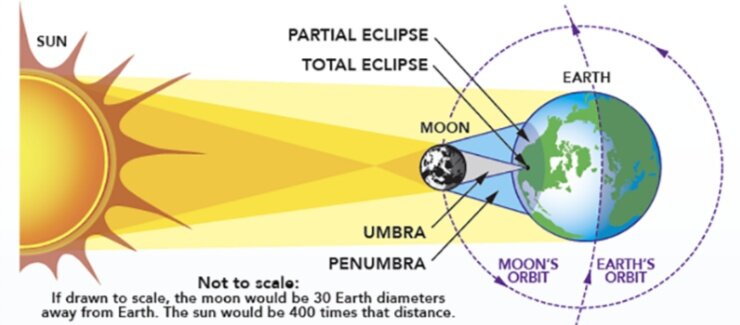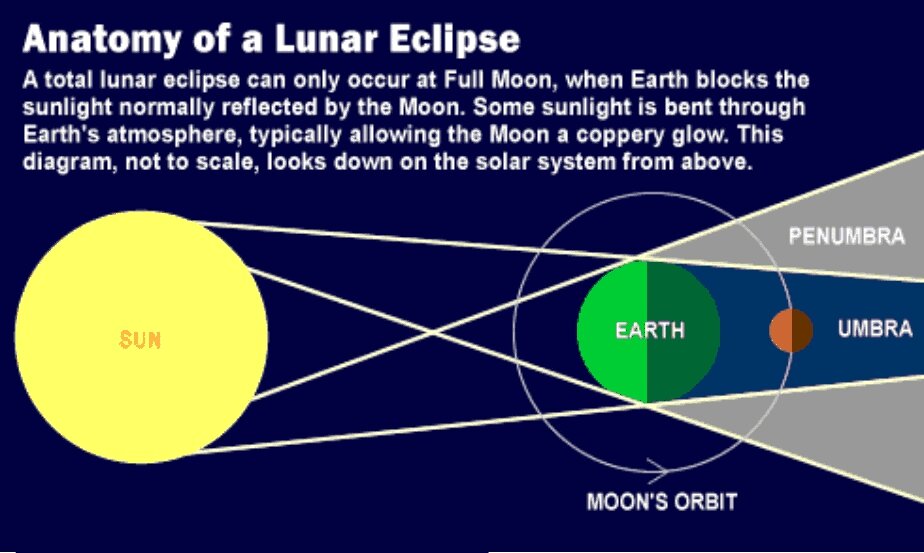Geography
Total Solar Eclipse 2019
- 04 Jul 2019
- 7 min read
A Total Solar Eclipse was witnessed in the region of the South Pacific and parts of South America (Mainly Chile and Argentina)
- This was the only Total Solar Eclipse of 2019.
- The astonishing thing about this Total eclipse was that it was viewed from the world’s clearest skies (Atacama desert).
- The Total Solar Eclipse was not visible in India,
Solar and Lunar Eclipse
- Eclipses are divided into two major types: Solar and Lunar.
- Solar eclipses occur when the Sun, Moon and earth all fall in the same line so that the Moon passes between Earth and the Sun, leaving a moving region of shadow on Earth’s surface.
- Lunar eclipses occur when the Sun, Moon and earth all fall in the same line and Earth passes between the Sun and the Moon, casting a shadow on the Moon.
- Eclipses may be classified into 4 types i.e. Annular, Total, Partial and Hybrid
- The type of eclipse we experience depends on the type of shadow that is involved.
- Both the Moon and Earth cast 3 shadows: umbra, penumbra, and an antumbra.
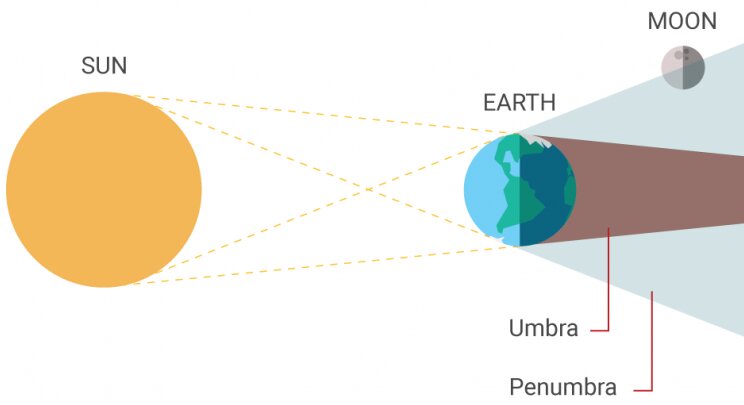
- The umbra is a shadow's dark core: It means If you are standing within the umbra, you will not be able to see any part of the light source as the object blocks all direct light rays.
- The penumbra is a half-shadow that occurs when a light source is only partly covered by an object
- Antumbra – the lighter part of the shadow that begins where the umbra ends.
- Both the Moon and Earth cast 3 shadows: umbra, penumbra, and an antumbra.
- In Total or annular solar eclipse: The Moon completely covers the Sun completely but whether an eclipse is total or annular depends on the distance between these three objects(Sun, Moon and Earth)
- Earth travels in an elliptical orbit around the Sun, and the Moon travels in an elliptical orbit around Earth, so the distance between these celestial bodies changes.
- Annular solar eclipse:
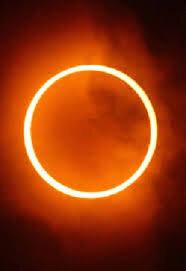
- When the Sun is nearest to Earth and the Moon is at or near its greatest distance, the Moon appears smaller than the Sun in the sky. When an eclipse of the Sun happens in this situation, the Moon will not appear large enough to cover the disk of the Sun completely, and a rim or ring of light will remain visible in the sky.
- Total solar eclipse:
- Total solar eclipses occur when the New Moon comes between the Sun and Earth and casts the darkest part of its shadow, the umbra, on Earth. A full solar eclipse, known as totality, is almost as dark as night.
- During a total eclipse of the Sun, the Moon covers the entire disk of the Sun. In partial and annular solar eclipses, the Moon blocks only part of the Sun.
- When Moon completely covers the disk of the Sun, only the Sun's corona is visible.
- It is called Total eclipse because at the maximum point of the eclipse( midpoint of time of totality), the sky goes dark and temperatures can fall.
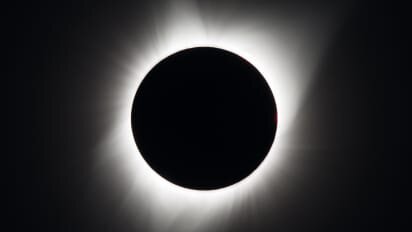
- The reason why solar eclipses are so rare is that the Moon's umbra rarely hits the Earth's surface. Even during a total solar eclipse, the umbra only covers a small area on earth(path of totality)
- That's why viewing a solar eclipse often depends upon where the viewer observes the event. A partial eclipse may be seen by viewers who stand outside of the region of shadow created by the umbra—the path of totality—but who remain within the large region of shadow covered by the penumbra, a region of lesser shadow where some light still penetrates.
- Hybrid Eclipse :
- A hybrid eclipse is a rare type of solar eclipse that changes its appearance as the Moon's shadow moves across the Earth's surface.
- A hybrid eclipse is a type of solar eclipse that looks like an annular solar eclipse or a total solar eclipse, depending on the observer's location along the central eclipse path.
- During a hybrid solar eclipse, the Earth's curvature brings some sections of the eclipse path into the Moon's umbra, the darkest part of its shadow that creates total solar eclipses, while other areas remain outside the umbra's reach, causing an annular eclipse.
- Both solar and lunar eclipses may also occur as Partial Eclipses.
- A partial eclipse of the Sun also results when the Moon’s penumbra falls on Earth but its umbra does not.
- A partial eclipse of the Moon occurs when the Moon passes through only part of Earth’s umbra or only its penumbra.
- The Moon does experience total eclipses. If the eclipse is a total lunar eclipse, the Moon will pass through the umbra (area of total shadow) created by Earth over the course of about two hours.
- There are no Annular lunar eclipse because the Earth is much bigger than the Moon, and its shadow will never be small enough to leave a ring.
- Since Moon is much smaller than Earth, there is no path of totality in a lunar eclipse. The eclipse will be visible to any observer on the night side of Earth when the eclipse occurs.
- During lunar eclipse, Moon does not typically go completely dark; it often takes on a red color, because the redder parts of sunlight that penetrate Earth’s atmosphere are refracted into the umbra, and this light reaches the Moon.



